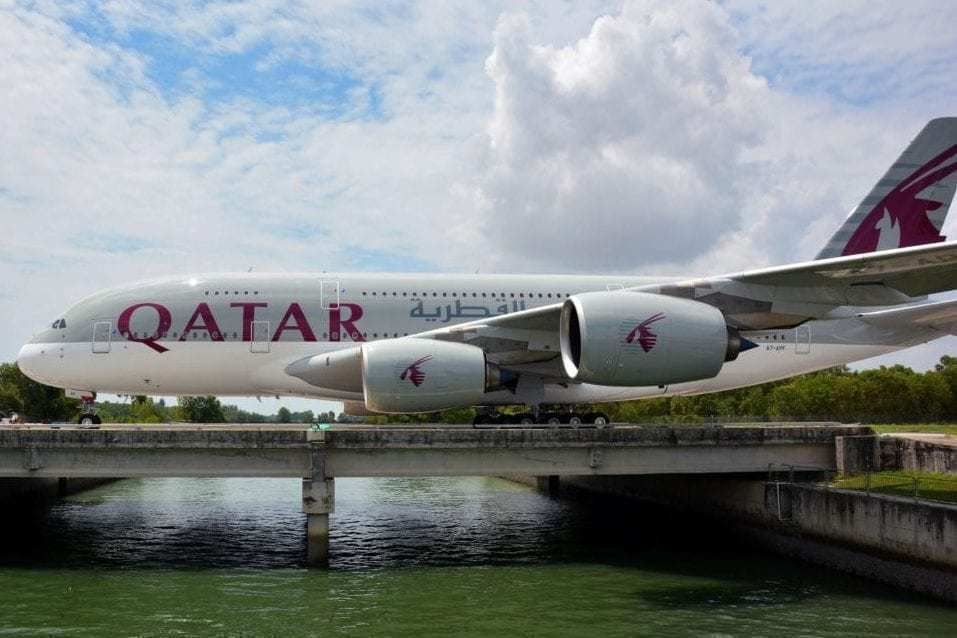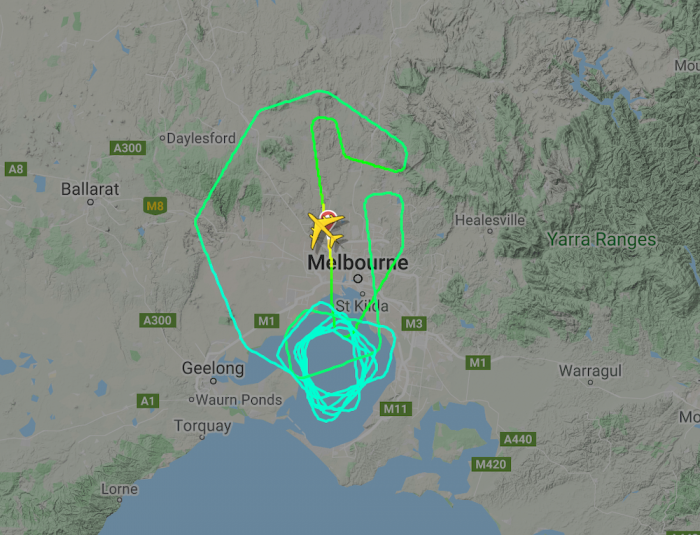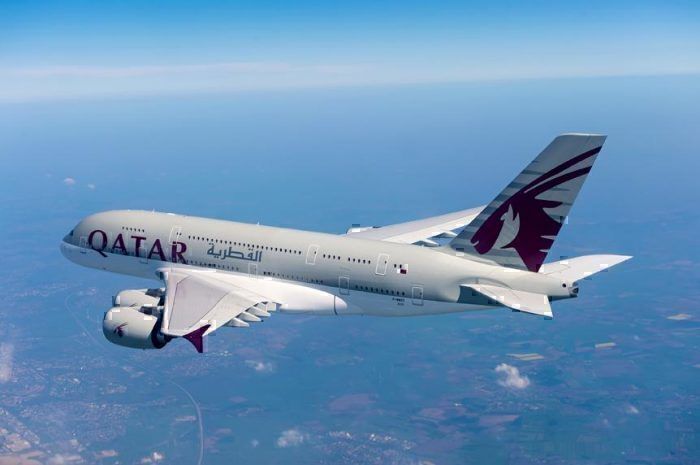**Update: 02/09/20 @ 06:10 UTC – The alert appears to have been instigated mistakenly on board the Air Europa flight, details below**
A Qatar Airways Airbus A380 experienced a technical issue today as it attempted to make its way out of Melbourne (Australia) to Doha (Qatar). According to FlightRadar24, due to the technical issue, the crew decided to return to Melbourne. However, due to the immense weight of the fully-fueled A380, it was forced to fly in circles to jettison fuel and lighten the load before making a safe landing.
Flight details
The flight being flown was QR905 from Melbourne to Doha. The flight departed at 10:28pm local time and then spent two hours in a holding pattern as it jettisoned fuel. Sometime after 1am the aircraft made a safe landing back in Melbourne.
According to Airfleets, the A380 has been with Qatar Airways since coming out of the Airbus factory. The aircraft is only six years old as it was built in 2014. The status of the aircraft is currently unknown and we are waiting for Qatar Airways for more information.
Qatar Airways responded to our inquiry saying:
“We can confirm that Qatar Airways flight QR 905 travelling from Melbourne to Doha on 9 February was diverted back to Melbourne due to a minor technical fault. We apologise for any inconvenience caused by this diversion. All passengers have been accommodated at hotels until the next available flight to Doha and will be assisted upon arrival into Doha to ensure smooth onward connections to their final destinations.”
Why the circles?
Occasionally we hear that an aircraft had to dump fuel in order to reduce their weight before landing. Although it does happen, fuel dumping, also known as fuel jettison, is certainly not a regular occurrence. In fact, it is undertaken only in emergency situations when the aircraft has to land earlier than expected.
It is important to note that the maximum takeoff weight of an aircraft is always higher than its maximum landing weight. Typically, an airplane that has just taken off for a long-haul flight - such as QR905's A380 - will be significantly heavier than its maximum landing weight. This is due to the fuel it is carrying for its long intercontinental journey.
If the aircraft has to land shortly after takeoff, dumping fuel will make it lighter and avoid some of the added stress on the aircraft structure and the landing gear. Stress that the aircraft and its landing gear are not designed to withstand.
The most recent notable fuel jettison
The most notable fuel jettison of recent memory involves a Delta Air Lines flight from Los Angeles to Shanghai on January 14, 2020. The Boeing 777 suffered an engine compressor stall and had to return to Los Angeles International Airport.
However, during the emergency landing, the pilots dumped fuel over Los Angeles. Unfortunately, the fuel didn't vaporize as it landed over some schools and playgrounds. As a result, a number of children and adults on the ground suffered injuries due to contact with jet fuel.
CNN reports that four teachers impacted by the fuel jettison are now suing Delta Air Lines for negligence. As many as 60 people ranging from children to adults on the ground across a number of schools were treated after coming in contact with the jet fuel. Most people reported irritation and burning sensations on their eyes and skin.
Conclusion
Hopefully, the technical issue can be resolved quickly so that QR905 can get back to home base in Doha. With so many passengers on board, this seems like an extra expensive ordeal as Qatar would likely put these travelers in hotel rooms for the night.
Have you ever been on an aircraft that had to jettison fuel and return to its origin airport? Share your experience with us in the comments.



